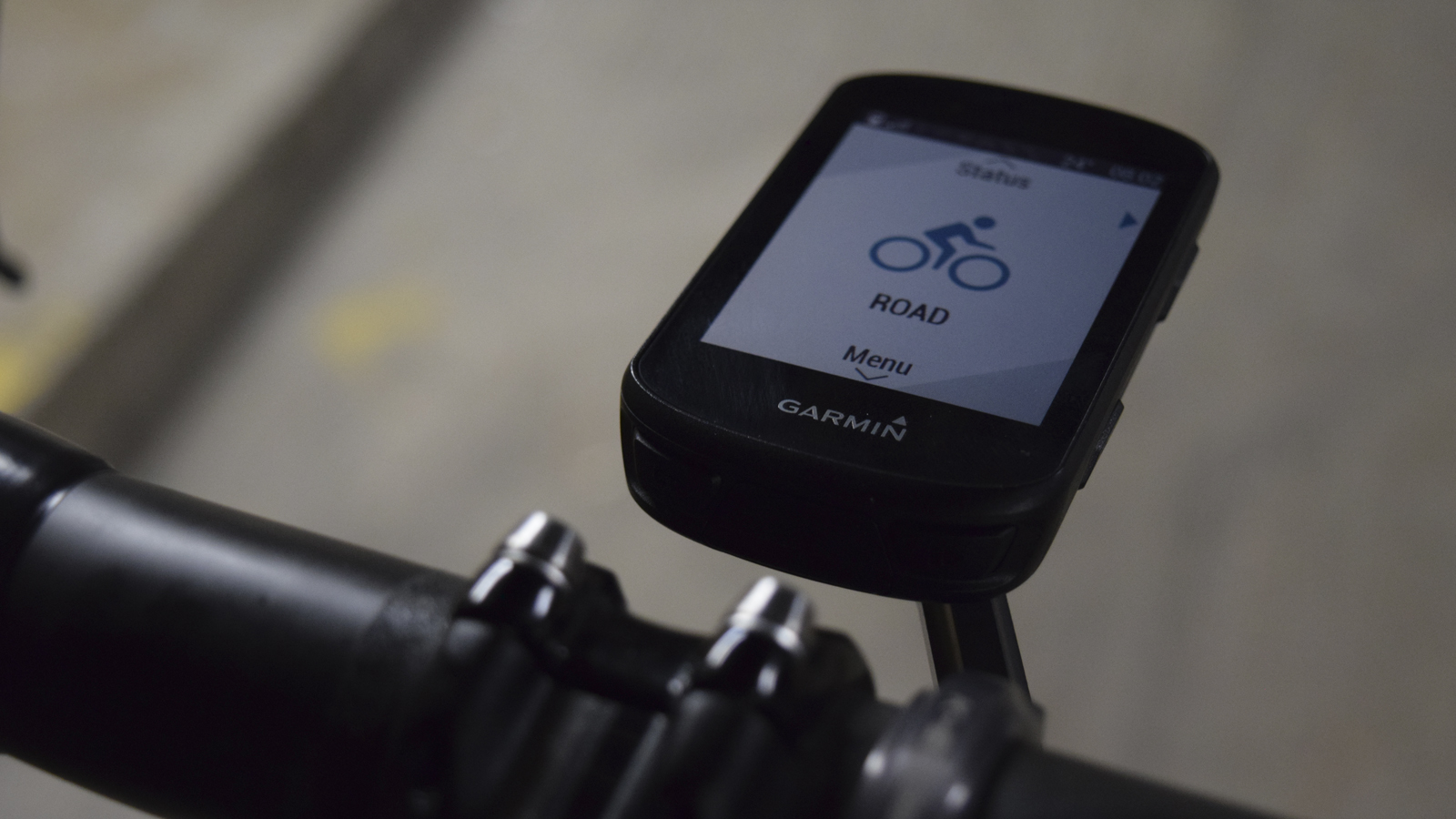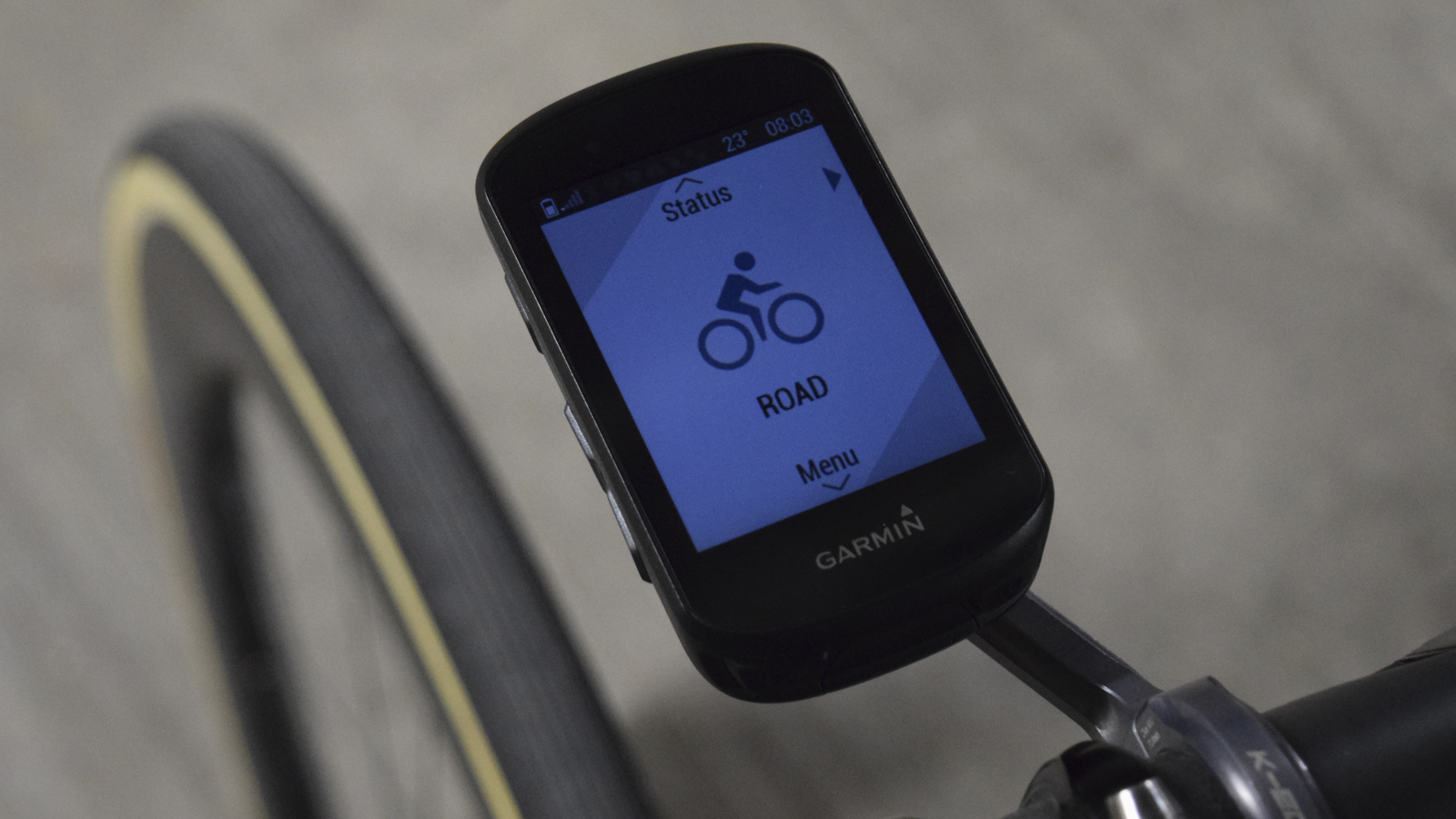Bike Perfect Verdict
The Garmin Edge 530 is a feature-rich GPS bike computer clad in a small, cost-effective package
Pros
- +
Mapping is clear and simple
- +
New, faster processor
- +
New mtb-friendly features
Cons
- -
Fiddly to set up
- -
Map browsing is a button-pressing marathon
Why trust BikePerfect
The Garmin Edge 530 is the latest in market-leader Garmin's GPS computer range, it's aimed at cycling enthusiasts, no matter their chosen terrain. Launched in spring 2019 along with the touchscreen Edge 830, the Edge 530 is feature-rich and comprehensive. However, in the days of touch-screen smartphones and voice remotes, the endless button-pressing can become a tedious exercise.
As expected, the Edge 530 shares its basic characteristics, menu structure, and features such as Strava Live Segments, with the previous generations of the 5-series Edge computers, however, it adds a raft of new features, a faster processor, and improves the aesthetic of the unit.
Battery life will last around 20 hours in standard operation, or you can double that in battery-saver mode, albeit exact times will depend on a range of factors, of course. There's also the option of the extra Garmin battery pack add-on, which will more-than-double battery life again for those week-long bikepacking adventures.
Design and aesthetics
The Garmin Edge 530 sits squarely at average when it comes to size. With dimensions of 82 x 50 x 20mm, it's a few millimetres smaller, but thicker than the Wahoo Elemnt Roam (89 x 54.4 x 17.8mm), and the screen size of 2.6in means it's smaller than said rival, too, albeit only by a tenth of an inch.
Weighing in at 75.8 grams, it's not the lightest, but it's far from the heaviest on the market - especially when considering the Edge 1030 is 124g, the Hammerhead Karoo is a whopping 186g, and the mite-sized Edge 130 tips the scales at just 33g.
The screen of the Garmin Edge 530 is small in comparison to the Edge 1030 or the Hammerhead Karoo, however, thanks to the 246x322 pixel resolution display, we didn't find it an issue. The display is crisp and clear, and even in low-light conditions with the backlight turned off, it's easy to see the metrics.
User Experience
My period with the Garmin Edge 530 has been a largely enjoyable time, however I'd be lying if I said there weren't any hiccups. The out-of-box setup was actually very straightforward, the onscreen prompts and phone-pairing and wifi-connection processes were simple. However, after my first ride, my ride failed to upload. A few days of manual intervention ensued before a hard-reset, a firmware update, an app-delete, and multiple 'forget this device' prompts eventually put paid to my initial headaches. That aside, the Garmin Edge 530 is pretty much 'set-and-forget' in its application; exactly what users want from a GPS device.
Features
The Edge 530 has added plenty of new features, from a café-stop bike alarm to the hang time feature that will tease the gnarly among us.
1. Mapping
Turn-by-turn navigation was introduced to Garmin's Five series computers when they launched the Edge 520 Plus, so while mapping isn't brand new for the Edge 530, it has improved. By upgrading the processor, mapping is now fast and simple to use. In real-world terms, this means a wrong turn will be flagged up and a re-route will be offered before you get to the bottom of the hill... we've all been there!
The Edge 530 features full turn-by-turn navigation, although on the unit itself, you can only navigate as deep as street level. For specific addresses and points of interest, you'll want the 830.
Due to the lack of a touchscreen, map browsing does take a lot of button presses. Map browsing uses three buttons; two that control panning north or south, panning east or west, and zooming in and out, and a third button to switch between the three. It's no pinch-and-zoom, but you do quickly become comfortable and relatively fast.
Once a destination has been chosen (or if you're following a preloaded route) the routing itself is fantastic. Like previous Edge models, it'll route-to-start, and the colour-coded map and audio cued make for simple, wrong-turn-free navigation.
2. Bike Alarm
A nice touch is the Bike Alarm which works a treat when leaving your race bike in the car park while you nip to sign on, or merely stop at the pub after a few hours of shredding. Any time that your bike is close-by but not necessarily in line of sight - park your bike up, switch the bike alarm feature on, and should your Garmin detect movement, a loud (read: unpleasant) noise will sound and your phone will notify you.
3. Find My Edge
This offers peace of mind for us mountain bikers; in the rare event where a crash could send your Garmin device into a nearby bush and out of sight, simply pull out your phone and, assuming you're still in Bluetooth range, you can tell your Edge 530 to sound an alarm.
Also, should any chattery terrain unhitch your Edge 530, you mightn't notice until the end of the trail. Fear not, your phone will save the exact coordinates of the point at which the Bluetooth connection is lost. Then you can simply open the app and ask it to redirect you back to that point.
4. ClimbPro
ClimbPro is a useful tool that tells you all the necessary information about upcoming climbs. Firstly, it will prewarn you of an upcoming climb, along with its important metrics (distance, gradient, ascent, etc). When it begins, it will bring up a new screen, which gives you a profile, with a few key details such as the average remaining gradient and distance.
I'd personally like the ability to adjust what is considered a climb. Throughout my time with the Garmin, I had long climbs arrive without warning, then warnings for oversized speedbumps.
5. Performance measurements
The newly added performance measurements are vast, and those of us who find importance in data, can find useful insight into performance-based metrics such as training load and load focus. The power curve is a useful addition, too. there's also an algorithm that calculates heat and altitude acclimation when above 22 degrees and 800m respectively, this adjusts training zones your VO2 Max to account for the added stresses heat and altitude can put on the body.
6. Gear (clothing) suggestions and consumption reminders
Based on a number of features such as weather and route, the Garmin Edge 530 will suggest clothing, water and calories. This isn't an essential feature, of course, but it's a helpful, quick checklist to make sure you avoid unnecessary in-ride issues or the dreaded bonk.
7. MTB features
Finally, we're on to the good stuff. The main new additions are calculations of Grit and Flow. Grit will measure the difficulty of a course itself, whereas Flow measures how well you rode it; did you rail those corners or were you stop-start all ride? Theoretically, if you were to go for a ride with friends, you should all get similar Grit scores, but you'll likely get vastly different Flow scores. Another new feature uses the Garmin's accelerometers to measure hang time, jump count and jump distance. A great bragging tool at the end of a day of sending it with mates.
TrailForks has also been integrated into the base map of the Garmin Edge 530. While the Connect IQ app previously existed, it's no longer required to find new trails when already out-and-about. This will come in handy for when you're playing in a new bike park or if you're newly exploring the off-road routes near home.



Verdict
On the whole, my time with the Garmin Edge 530 was great. There were a few initial headaches with setup, but once they were out of the way, the long list of features made for a great device that was fast, clear, and a genuinely beneficial addition to my ride. At £259.99, it's not the most expensive unit on the market but if it were my own hard-earned cash, I have to say I would opt for the Edge 830 and its touch-screen refinement. See, the majority of my building phase is done in the middle of winter where two pairs of gloves - not to mention a frozen moustache - is not particularly conducive to button-pushing and fiddling about on the bike. My advice would be to spend the extra and get the touchscreen Edge 830.
Tech spec
- Display: 2.6 inch colour display with 246x322 pixels resolution
- Weight: 75.8g
- Storage capacity: 200 waypoints/locations, 100 routes & up to 200 hours of history
- Water resistant: IPX7
- Connectivity: Wi-Fi, Bluetooth, ANT+
- Sensors: GPS/GLONASS/Galileo, barometric altimeter
- Battery: Rechargeable (micro USB) Lithium ion with 20 hour-rated life
- Dimensions: 82 x 50 x 20 mm
Not for you?
Josh is the former eCommerce manager of the Bike Shed Devon. After dabbling in cross-country as a juvenile he quickly turned to road cycling. Josh regularly competes in the road - he's a mid-pack 1st cat racer he’ll often be found at the local criterium waiting for the sprint. Recently he's taken up gravel cycling but also dabbles in fair-weather cyclocross. Oh, he also writes about all the latest tech developments and deals for Cyclingnews and Bike Perfect.
Rides: Trek Emonda ALR, Specialized S-Works Tarmac SL6 Disc, Specialized Crux 'cross bike


